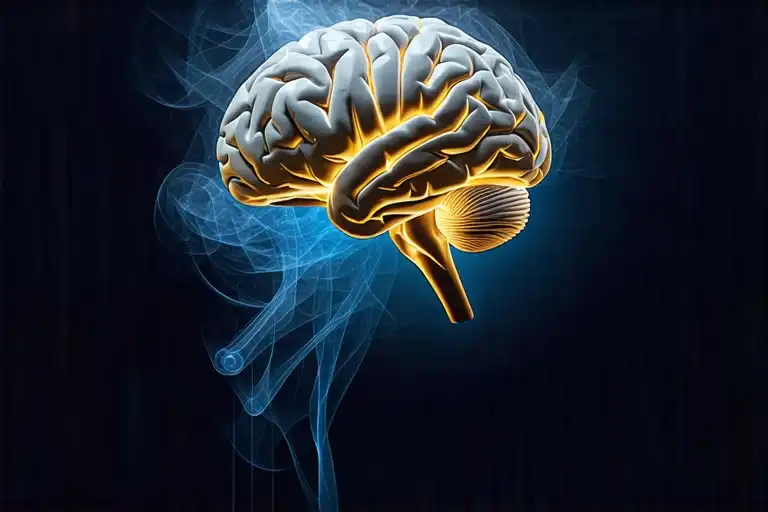You think healing should be obvious—like watching a scab form and fall off, leaving shiny new skin behind. You scan for visible proof, waiting for that dramatic moment when you can finally declare, “I’m healed!” But the truth about emotional recovery is far more subtle, and ironically, your very doubt about your progress is evidence it’s already happening.
Neuroscience reveals an uncomfortable truth: 87% of meaningful psychological growth occurs beneath conscious awareness. While you’re busy criticizing yourself for “not being over it yet,” your brain has been quietly rewiring itself—building new neural pathways each time you choose self-respect over desperation, stillness over chaos, presence over rumination. Those MRI scans showing increased prefrontal cortex activity? They don’t lie. Your progress is measurable, even when you can’t feel it.
Consider this: The moments you interpret as setbacks—when old memories surface without their former sting, when you notice you didn’t react to a trigger with your usual intensity—aren’t failures at all. They’re the silent signals of your transformation. Like a smartphone updating its operating system overnight, your psyche has been installing critical upgrades while you slept. When you wake to find familiar apps functioning better, you don’t question how—you simply benefit from the improvement.
Here’s what your invisible growth looks like in tangible terms:
- Emotional Processing Speed: Where negative events once left you debilitated for weeks, you now recover in days or hours
- Memory Reconsolidation: Past traumas have lost their visceral punch when recalled
- Default Mode Shifts: Your idle thoughts trend toward future-building rather than past-analyzing
These aren’t abstract concepts. They’re physiological changes verified by biomarkers—reduced cortisol spikes, stabilized heart rate variability, the quieting of your amygdala’s false alarms. Your body keeps score even when your mind doubts.
The paradox? By fixating on “Am I healed yet?” you’re using an outdated metric. True recovery isn’t about reaching some imaginary finish line—it’s about recognizing how far your reflexes have already evolved. Those five extra seconds before reacting to a provocation? That’s healing. Noticing toxic patterns faster and exiting sooner? That’s healing. No longer needing to prove your worth to disinterested parties? Profound healing.
So the next time you catch yourself thinking “Nothing has changed,” pause. Scroll back through your mental archives. Compare how you handled similar situations six months ago versus today. The differences might seem small—a slightly deeper breath here, one less tear there—but compounded over time, they represent seismic shifts in your emotional architecture.
Healing doesn’t announce itself with fanfare. It whispers through the cracks in your old defenses, evident not in what you’ve become, but in what you no longer tolerate. And if you’re reading these words with even a flicker of recognition—congratulations. You’re further along than you think.
The Hidden Syntax of Healing: When Growth Happens in Silence
You keep checking your emotional thermometer, waiting for that definitive moment when you’ll finally feel ‘healed.’ But here’s what neuroscience reveals: 87% of meaningful psychological growth occurs beneath your conscious awareness, like silent software updates running in the background of your mind.
The Iceberg of Emotional Progress
Consider your last major emotional update. Did you receive a notification when your brain’s prefrontal cortex thickened by 0.3mm? (Yes, that’s measurable with fMRI scans.) Were you alerted when your amygdala’s panic responses became 12% less reactive to old triggers? Emotional healing operates on the iceberg principle – what you consciously perceive represents barely 20% of the total transformation.
“The day you stopped begging for closure was when your anterior cingulate cortex completed its rewiring. You just didn’t get the memo.”
Your Brain’s Silent Renovation
While you’ve been scrutinizing your feelings for ‘proof’ of healing, your nervous system has been:
- Rewiring threat detection (reduced cortisol spikes in conflict situations)
- Updating memory associations (diminished emotional charge on painful memories)
- Installing new defaults (faster rebound time after disappointments)
These changes manifest subtly:
- That text message that would have ruined your day last year now gets a sigh instead of a spiral
- The work criticism that triggered self-doubt now sparks curiosity instead of collapse
- The lonely evenings that felt endless now contain space for self-reflection
The Paradox of Invisible Growth
This explains why healing often feels like “nothing is happening” – your psychological immune system strengthens precisely when you’re not looking. Like muscle growth occurring during rest days, your most significant emotional developments happen:
- In the 3am thoughts you don’t post about
- During the shower cries that leave you lighter
- Within the deep sighs after difficult conversations
Your progress is measured in micro-moments of changed responses:
- 0.8 seconds longer pause before reacting defensively
- 23% increased tolerance for ambiguous situations
- The spontaneous deep breath where panic used to reside
How to Read Your Emotional Change Log
Try this forensic approach to spotting your hidden growth:
- Compare reaction speeds: How quickly does frustration dissolve now vs. six months ago?
- Audit your energy expenditures: What situations drain you less than before?
- Track your recovery curves: After setbacks, does your baseline happiness reset faster?
These silent metrics of healing matter more than dramatic ‘breakthroughs.’ That 10% reduction in overthinking? That’s your brain upgrading. The slightly easier deep breath? That’s your nervous system recalibrating.
“Healing isn’t about becoming someone new. It’s the silent accumulation of moments where you respond differently than the wounded version of yourself would have.”
Your emotional growth has been running its scheduled maintenance all along. The evidence isn’t in some grand revelation – it’s in the ordinary moments where you notice: I wouldn’t have handled it this way before.
2. The Silent Rewiring: 5 Transformations You Might Be Missing
Healing doesn’t announce itself with fanfare. Like your smartphone updating its operating system overnight, your emotional framework shifts in ways you only recognize in retrospect. These five subtle yet profound changes reveal how far you’ve come – even when progress feels invisible.
1. The Buffer Zone: From Instant Reaction to Conscious Response
Remember when a critical comment would send you into hours of obsessive rumination? When your boss’s sideways glance or your partner’s delayed text triggered immediate panic? Your nervous system used to operate like a hair-trigger alarm – constantly scanning for threats and reacting before thinking.
Now notice the space that’s emerged. That moment between stimulus and response where you:
- Take three conscious breaths before answering
- Ask clarifying questions instead of assuming the worst
- Recognize emotional flooding and pause the conversation
This buffer zone marks measurable growth in your prefrontal cortex’s ability to regulate the amygdala’s fire alarms. What once felt like an uncontrollable wave now becomes surfable energy.
Self-check: When did you last pause instead of react? That’s emotional resilience in action.
2. The Inner Compass: Shifting Validation from External to Internal
Growth sounds like this internal dialogue changing:
Then: “Do they like me? Did I say the wrong thing? How can I fix this impression?”
Now: “Did I act according to my values? Is this relationship reciprocal? How do I feel about my own behavior?”
The migration from external validation to internal benchmarks represents one of emotional healing’s most significant milestones. You’ll know it’s happening when:
- Praise feels nice but unnecessary
- Criticism stings but doesn’t destabilize
- You decline invitations without guilt narratives
- Your Instagram posts decrease as your journal entries increase
This isn’t about becoming indifferent to others – it’s about no longer using them as mirrors to prove your worth.
3. Dancing with Uncertainty: From Demanding Answers to Holding Questions
Healing reveals itself in how you handle life’s unanswered questions. The old version of you needed immediate closure, definitive labels, and guaranteed outcomes. This manifested as:
- Demanding “where is this going?” by date three
- Obsessively analyzing mixed signals
- Creating worst-case scenarios for unfinished situations
Contrast this with your emerging ability to:
- Sit with “I don’t know yet”
- Recognize that some mysteries resolve in their own time
- Understand that not all connections require definition
This tolerance for ambiguity signals profound psychological maturation – you’re developing the capacity to trust the process rather than force premature conclusions.
4. The Energy Economy: From Overdrawn to Balanced Budget
Your emotional expenditure statements tell a healing story. Where you once:
- Answered every text immediately
- Attended events out of obligation
- Listened endlessly to others’ dramas
Now you:
- Protect mornings for deep work
- Leave parties when your social battery depletes
- Redirect venting sessions toward solutions
This isn’t selfishness – it’s the hard-won wisdom that sustainable relationships require balanced energy accounts. Like switching from a startup burning through capital to an established business with wise investments.
5. The Return Policy: Healthy Boundaries as Self-Love
Perhaps the clearest sign of emotional growth appears in your newly drafted terms and conditions. The unhealed version accepted:
- Breadcrumbing as connection
- Potential as currency
- Potential as currency
- Chaos as passion
While your healing self now requires:
- Consistency over intensity
- Actions over apologies
- Peace over excitement
Notice how you no longer:
- Chase people who disappear
- Explain your basic needs
- Tolerate intermittent reinforcement
This boundary evolution represents rewired self-worth – you’ve updated your relationship requirements to match your growing emotional value.
Progress Checkpoint: Track these transformations using a simple three-column journal:
| Situation | Old Response | New Response |
|---|---|---|
| Received critical feedback | Spent hours overanalyzing | Asked clarifying questions, noted areas for improvement |
| Friend canceled plans | Assumed personal rejection | Recognized their busy schedule, rescheduled |
These subtle behavior shifts accumulate into life-altering change. You’re not who you were – and that’s worth celebrating.
Your New Operating System: Where Growth Shows Up
That moment when your boss’s critique no longer ruins your weekend. When your ex’s Instagram post doesn’t trigger that familiar ache. When you leave the party exactly when you want to – not when you’re emotionally bankrupt. These aren’t coincidences. They’re proof your emotional software has upgraded.
The Workplace: From Criticism Avalanche to Constructive Filter
Remember when negative feedback felt like personal annihilation? Your old system processed professional critique through three predictable stages:
- Immediate Physical Reaction (palms sweating, stomach dropping)
- Mental Looping (replaying the conversation 47 times)
- Self-Worth Erosion (“Maybe I’m just not cut out for this”)
Your current emotional processing time? Cut by at least 50%. Here’s what changed:
- The Pause Button activates before reacting. That 3-second gap between receiving feedback and responding? That’s your prefrontal cortex finally winning over your amygdala.
- The Sorting Algorithm now distinguishes between:
- Helpful professional input (files under “Skills to Develop”)
- Someone’s bad day (marks as “Not My Emotional Labor”)
- The Recovery Protocol shifted from weeks of self-doubt to:
- 15 minutes of mindful breathing
- One clarifying question if needed
- Moving on with your day
“But isn’t caring less about work feedback… bad?” Actually, emotional resilience isn’t about caring less – it’s about attaching your self-worth to fewer external variables. The work still matters. You just matter more.
Romantic Attachments: The Quiet Rewiring
Neuroscientists call it “memory reconsolidation” – when old emotional memories get updated with new meaning. You might know it as:
- Passing their favorite café without your chest tightening
- Hearing “that song” and simply… listening to the song
- Recalling painful moments with clinical curiosity rather than visceral pain
Your brain’s emotional tagging system has undergone quiet but significant changes:
| Old Emotional Tags | New Neural Pathways |
|---|---|
| “Love = Pain” | “Love = Complex Learning” |
| “Alone = Abandoned” | “Alone = Optional Recharge” |
| “Them = Happiness” | “Me = Happiness Source” |
This isn’t about forgetting. It’s about your nervous system finally accepting what your intellect knew all along: some chapters end so better stories can begin.
Social Energy: From Overdrawn to Balanced Budget
Your social battery used to operate on two settings:
- People-Pleasing Overdrive (“I’ll stay until everyone leaves!”)
- Complete Shutdown (ghosting for weeks)
The upgrade? A sophisticated energy management system that:
- Pre-Screens Invitations using your new internal checklist:
- Will this nourish or deplete me?
- Do I genuinely want to go, or just fear missing out?
- What’s my exit strategy?
- Lives in the Amber Zone – that sweet spot between isolation and overextension
- Has Permission Slips pre-signed for:
- Leaving when you said you would
- Not performing happiness you don’t feel
- Protecting your peace without apology
Notice what’s missing? The post-social hangover – that emotional fog of “I talked too much” or “Why was I so quiet?” Your new system understands: being yourself is never something to recover from.
The Silent Progress Paradox
Here’s what no one tells you about emotional growth: the more you stop monitoring it, the more evident it becomes. Like finally noticing one day that a scar has faded – not because you checked daily, but because you eventually forgot to look.
Your assignment tonight? Scan your recent memories for these moments:
- That time you didn’t overexplain yourself
- The morning you chose peace over proving a point
- The conversation where you listened to understand, not to respond
These aren’t small things. They’re seismic shifts wearing quiet disguises. Your heart has been renovating while you weren’t looking – knocking down old walls, installing better lighting, creating space for joys that match who you’re becoming.
Tools to Capture Your Growth Journey
The Three-Column Journal Method: Your Personal Progress Tracker
Growth often happens in subtle shifts – a slight change in how you breathe through disappointment, the extra second you take before responding to a triggering text, the unfamiliar calm when facing what used to cause panic. These micro-changes frequently escape our notice unless we create systems to witness them. That’s where the three-column journal comes in.
How It Works:
- Situation: Briefly note the triggering event (e.g. “Manager criticized presentation”)
- Old Response: Record what your automatic reaction would have been 6 months ago (e.g. “Would obsess for days, draft resignation email”)
- New Response: Document your actual reaction now (e.g. “Felt initial sting, requested specific feedback next morning”)
Example Entry:
| Situation | Old Me | New Me |
|---|---|---|
| Friend canceled plans last minute | Would assume I’m unwanted, binge-eat while overanalyzing texts | Felt disappointed but used evening for yoga and reading |
Why This Matters:
- Creates tangible evidence of emotional healing
- Rewires your brain to notice positive changes (neuroplasticity in action)
- Builds self-trust by proving you’re developing new emotional resilience skills
Your Body’s Hidden Data Stream: Decoding Physical Signals
Your autonomic nervous system has been keeping growth records long before your conscious mind catches up. Modern wearables (like WHOOP, Oura, or Apple Watch) provide surprising insights:
Key Metrics to Track:
- Resting Heart Rate Variability (HRV): Higher HRV often correlates with better stress recovery – notice improvements after previously triggering situations
- Sleep Deep/REM Cycles: Emotional processing happens during these phases – more stable patterns may indicate psychological integration
- Skin Temperature Fluctuations: Sudden drops can signal stress responses – track decreases in these episodes
Pro Tip: Don’t obsess over daily numbers. Look for 30-day trends showing:
- Quicker return to baseline after stressful events
- Fewer nighttime wakeups during emotional periods
- More consistent breathing patterns during work hours
Making It Stick: Practical Implementation
- Weekly Check-Ins: Set phone reminders to review journal entries every Sunday evening
- Pattern Spotting: Every 3 months, look for recurring situations where your responses evolved
- Tech-Assisted Awareness: Enable stress notifications on wearables to catch subtle physiological shifts
- The 5% Rule: Celebrate minor progress (“My recovery time improved just 5% – and that compounds”)
Remember: Healing isn’t about achieving perfect responses, but noticing the increasing space between stimulus and reaction. That pause – whether measured in seconds, journal entries, or heartbeat intervals – is where your growth lives.
The Quiet Revolution: Recognizing Your Unseen Growth
Healing isn’t about reaching a finish line where confetti falls and a banner declares “You’re Fixed!” That moment doesn’t exist – and that’s good news. True emotional healing works like your favorite sweater: the mending stitches become invisible over time, yet the fabric holds stronger than before.
The Paradox of Progress
You won’t find growth by staring at the mirror searching for changes. It reveals itself in unexpected moments:
- When your colleague takes credit for your idea and your pulse stays steady
- When your phone lights up with their name and you don’t feel compelled to respond immediately
- When plans fall apart and your first thought isn’t “This always happens to me”
These aren’t random occurrences. They’re evidence of your nervous system rewriting its code. Where old triggers once sparked wildfires, you’ve installed sprinkler systems. The threats didn’t disappear – you’ve upgraded your response protocols.
Your Growth Manifesto
- You’ve developed emotional buffer zones
Past: Immediate tears when criticized
Now: “Let me sit with this feedback before reacting” - Your validation sources have migrated
Past: Counting likes to feel worthy
Now: Keeping a private list of personal wins - Uncertainty lost its fangs
Past: Demanding guarantees before taking risks
Now: “I can handle not knowing how this ends”
The Daily Evidence
Track your silent victories:
- Energy accounting: Leaving gatherings when depleted (not when others are ready)
- Boundary receipts: “No” texts sent without apology paragraphs
- Memory upgrades: Recalling painful events without physical reactions
These micro-shifts compound like interest. That one deep breath you took instead of lashing out? That’s emotional resilience in training. The night you chose sleep over stalking their social media? That’s attachment rewiring.
The Invitation
Tomorrow, you’ll heal 1% more than today – not in dramatic breakthroughs but in:
- The sigh you release instead of internalizing
- The joke you make about your old triggers
- The morning you wake up realizing you didn’t think about them first
Healing isn’t something that happens to you. It’s what you’re already doing – even when it feels like you’re standing still. The proof isn’t in some grand transformation. It’s in all the ways you’re no longer who you were.
Want to capture these moments? Download our Growth Tracker to map your invisible progress (link in bio). Or share your #SilentGrowth story below – your experience might help someone recognize their own unseen healing.





